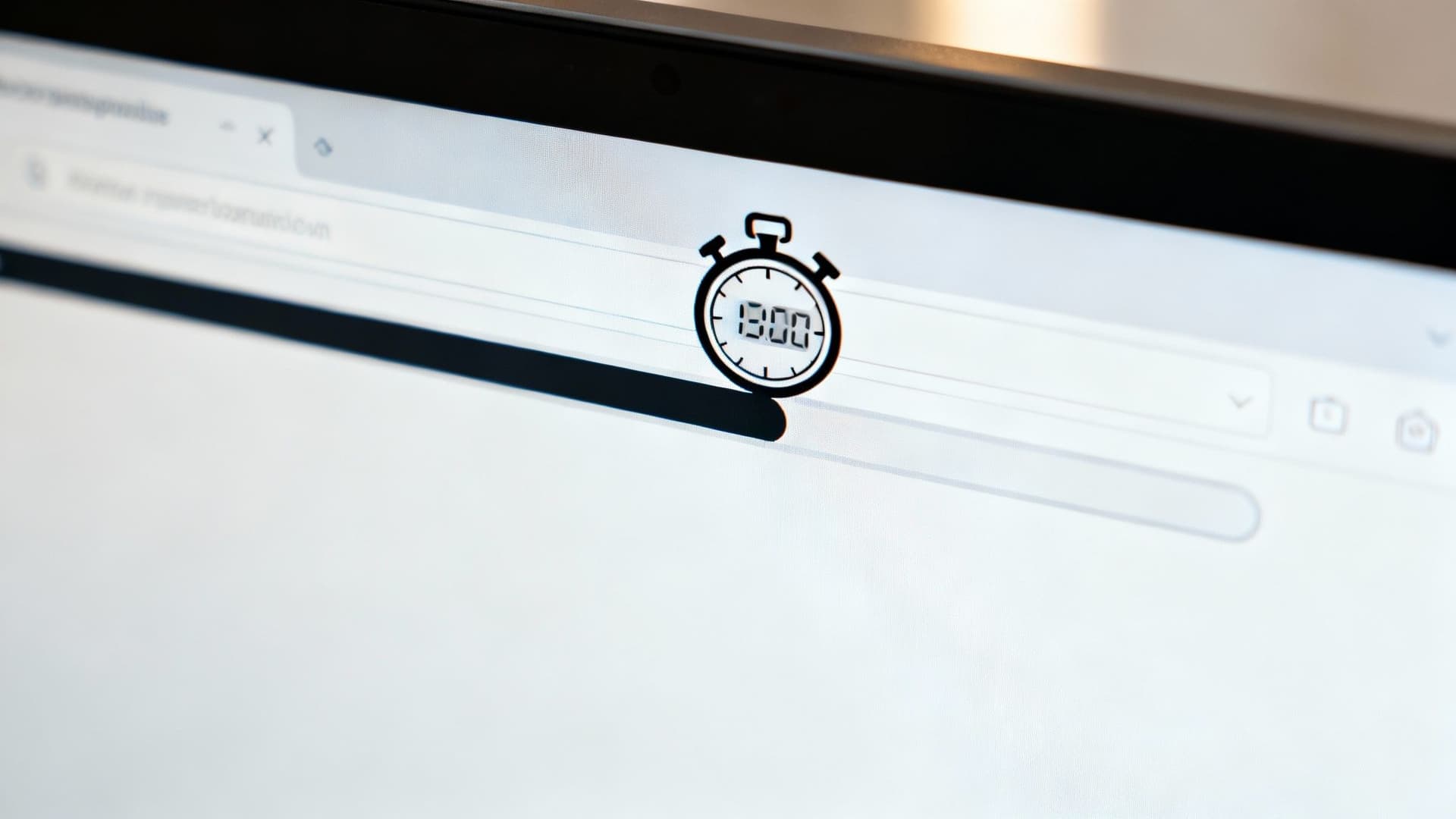Discover practical, high-impact fixes to lower bounce rate fast: speed, mobile UX, clearer content, and smarter internal links. This guide shows what to measure, what to test, and the tools that help you prove impact.
October 15, 2025 (1mo ago) — last updated October 27, 2025 (1mo ago)
Reduce Bounce Rate Quickly: Proven Strategies
Lower bounce rate with practical fixes for site speed, mobile UX, clearer content, and internal linking. Tools and tests to measure impact.
← Back to blog
Reduce Bounce Rate Quickly: Proven Strategies
Discover practical, high-impact ways to lower bounce rate with fixes for site speed, mobile UX, content formatting, and internal linking. Learn what to measure and how to test changes for real results.
Before you begin cutting your bounce rate, diagnose why people leave. Is your site slow? Is navigation confusing? Does the content fail to deliver on its promise? Move from guesswork to focused testing so fixes actually work.
Understand Why Visitors Really Leave Your Site
It’s frustrating to watch a visitor arrive and disappear in seconds. This isn’t about blaming one issue; it’s about playing detective to find the root cause. Most exits fall into a few common traps:
- Slow page load speed. If pages take more than a few seconds, many visitors won’t wait1.
- Poor user experience (UX). Clunky navigation, confusing layouts, or a design that breaks on mobile drive visitors away.
- Content mismatch. The headline or search snippet promised an answer, but the page delivered something else.
- No clear next step. Without a clear call-to-action or relevant internal link, visitors hit a dead end and leave.
Good Bounces vs. Bad Bounces
Not all bounces are bad. A “good bounce” happens when a user finds the exact answer on a single page, like contact info or a quick fact. A “bad bounce” is when a potential customer gets frustrated and abandons their path to conversion. Focus fixes on the bad bounces.
A Quick Diagnostic Flow
Identify high-bounce pages, check page speed and mobile layout, review content for intent match, and test clear next steps. Prioritize fixes by impact and effort so you focus on the biggest leaks first.

Common Bounce Rate Culprits and First Actions
| The Problem | Why It Drives People Away | First Action |
|---|---|---|
| Glacial page speed | Visitors won’t wait; slow pages feel broken. | Run PageSpeed Insights and fix the top issues1. |
| Confusing navigation | Users can’t find what they want quickly. | Ask someone unfamiliar with your site to find a product or page and watch where they struggle. |
| Mobile-unfriendly design | Small text, tiny buttons, or broken layouts on phones. | Use Google’s Mobile-Friendly Test and fix the top issues. |
| Aggressive pop-ups | Pop-ups block content before users can read. | Delay pop-ups until 30 seconds or after significant scroll. |
Expectations vary by industry; some news sites and blogs run higher bounce rates than product pages. Use industry benchmarks and your historical data to set realistic goals3.
Make your site accessible and easy to use for everyone, and handle visitor data responsibly to comply with your privacy policy.
Make Your Website Faster to Keep Users From Leaving
We’ve all clicked a link, seen a blank screen, and hit back after a few seconds. Load time and bounce rate are closely related: as load times climb, the chance of leaving jumps, and that’s one of the highest-impact areas to improve1.
Start with Google’s PageSpeed Insights for desktop and mobile to identify what’s slowing you down. Common culprits are oversized images, render-blocking scripts, and heavy third-party embeds.

Practical Steps to Boost Site Speed
You don’t need to be a developer to fix common bottlenecks. Start with these:
- Compress images. Optimize images before upload to cut file size without noticeable quality loss.
- Enable browser caching. Let repeat visitors load faster by storing static assets locally.
- Trim bloat. Remove unused plugins, scripts, and extra CSS or JavaScript.
- Defer noncritical scripts. Load analytics or chat widgets after content is visible.
Frame speed improvements in business terms. For many organizations, slow pages cost leads and revenue. Use tools like the Email List Value Estimator to estimate the revenue that’s bouncing away.
Craft Content That Captures and Holds Attention

A fast site gets visitors in the door, but strong content makes them stay. Reducing bounce rate comes down to satisfying user intent quickly and clearly. People scan pages rather than read every word, so format for scannability2.
Deliver on the promise your title and meta description made. Put the key answer near the top and use clear headings that match search intent.
Format for Scanners, Not Readers
- Use clear H2s and H3s to break content into sections.
- Keep paragraphs short, one to three sentences.
- Bold key phrases so scanners get the gist quickly.
- Use bullet lists for steps, features, or examples.
Formatting for scanners isn’t dumbing down content; it’s respecting your visitors’ time.
Guide Visitors with Smart Internal Linking
Internal links turn a single visit into multiple pageviews. Link naturally from an overview to a detailed guide, or from a tool page to a related how-to.
If you offer interactive tools, highlight them as next steps. Examples:
Feature helpful tools where relevant, for example the Domain Name Value Estimator or the YouTube Channel Value Estimator when they match user intent.
Smart internal linking gives visitors a clear next step and reduces bounce rate.
Design an Intuitive Experience for Every Device

A confusing site means empty pages. If visitors can’t immediately figure out where to go or what to do next, they won’t stick around.
Prioritize Mobile Usability
With most traffic on mobile, a poor mobile experience is a major liability. Do this quick audit on a phone:
- Is text readable without zooming? Increase font size if not.
- Are buttons and links easy to tap? Leave enough space around clickable elements.
- Does the site load reasonably on a cellular connection? Test away from fast Wi‑Fi.
- Is navigation simple? Can someone find “Contact” or “Products” without digging?
Fixing these basics is nonnegotiable. Adding device-friendly interactive tools can keep visitors engaged; try the Email List Value Estimator or the Mortgage Calculator as examples of mobile-friendly features.
Use Data to Drive Continuous Improvements
Stop guessing and start measuring. Analytics point to where to focus. Find pages with the highest bounce or exit rates—those are your leaks. Form hypotheses and run tests.
From Insight to Actionable Tests
If a service page has an 85% bounce rate, the data tells you something’s wrong but not the exact fix. Run A/B tests for meaningful changes: headline, CTA placement, or opening paragraph. Use proper sample size and duration so results are significant.
Connecting Bounce Rate to Business Goals
Lowering bounce rate isn’t just about a metric; it’s about revenue. More engaged visitors mean more conversions and signups. Use the Email List Value Estimator to show how a new subscriber adds value. When you can show how a 10% drop in bounce rate might translate to revenue, bounce rate becomes a core KPI.
Answering Your Top Questions About Bounce Rate
What’s a Good Bounce Rate?
It depends on context. A blog post may have a bounce rate of 70–80% and still be fine if readers get their answer and leave. For product or landing pages, anything over 50% should prompt investigation. Focus on steady improvement against your own historical data and industry averages3.
Does a High Bounce Rate Hurt SEO?
Google doesn’t use bounce rate as a direct ranking factor, but bounce behavior can indicate poor user experience. If users consistently pogo‑stick back to search results, that can indirectly hurt rankings over time.
How Long Until I See a Change?
Patience matters. High‑traffic sites may see results in a week; smaller sites may need a month or more to collect reliable data. Test one meaningful change at a time and wait for statistically significant results.
At MicroEstimates, we offer no‑code tools that help you build engaging, interactive experiences that make visitors want to stick around. From instant quote generators to ROI calculators, these tools help turn potential bounces into conversions. Build your first custom tool and start improving engagement today.
Email List Value Estimator • YouTube Channel Value Estimator • Mortgage Calculator • Domain Name Value Estimator
Quick Q&A — Concise Answers to Common Concerns
Q: What single change usually gives the biggest improvement?
A: Speed and above‑the‑fold content clarity. Improve load time and make the top of the page answer the visitor’s intent.
Q: How do I know whether a bounce is bad?
A: Look at downstream behavior—if visitors don’t convert or return, it’s likely a bad bounce. Use session recordings and on‑page surveys for clarity.
Q: Which tools should I use first?
A: Start with PageSpeed Insights, Google’s Mobile‑Friendly Test, and basic analytics. For demonstrating ROI, use the Email List Value Estimator.
Ready to Build Your Own Tools for Free?
Join hundreds of businesses already using custom estimation tools to increase profits and win more clients